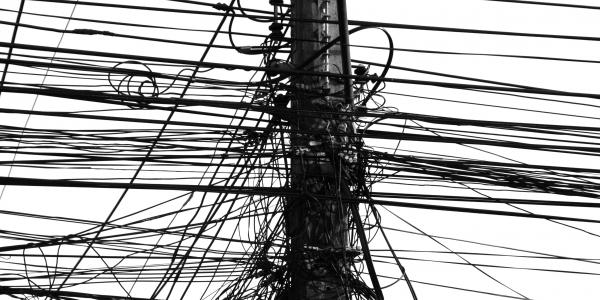Interview with Faculty Fellow Talia Dan-Cohen
“Complexity” is everywhere. This ubiquity is reflected in a sharp spike in the use of the term in American English since the early 2000s, tacked onto an already steady rise in the preceding six decades. (Google’s Ngram viewer, a tool that displays a graph of how frequently phrases appeared in printed material between 1800 and 2019, determines this prevalence with a database of 8 million books.) From feminist philosophy to archaeology, from climate science to public policy, scholars have increasingly attempted to address the complexity of their subjects. With her book in progress, “Questioning Complexity,” sociocultural anthropologist Talia Dan-Cohen turns her attention to the ways in which complexity lives and works in several of these disciplines. Illustrated via a set of interlinked case studies, she argues that the pervasiveness of complexity can tell us as much about the social and political conditions in which knowledge is produced as it does about the kinds of phenomena experts seek to know. Below, Dan-Cohen, who is also a Faculty Fellow in the Center for the Humanities, offers a peek into her new project.
What is your book about?
The last few decades have seen many studies of the damages wrought by approaches to knowledge that reduce and simplify. Such studies often argue that reduction and simplification can be blamed for many of the global problems we face today because they leave out so much. In response, many scholars from different corners of the humanities and humanistic social sciences have adopted complexity both as a description of what the world is like and as an aim for knowledge, or what is often termed an “epistemic virtue.”
My book project examines complexity’s meanings and uses in light of this tendency to frame complexity as a good thing. I show that what gets to count as complex changes over time, that complexity has a long and winding history in different disciplinary traditions, and that the term has been associated with different epistemological, political and moral projects.

How did complexity become such a central problem?
That is the question! I think one common sense answer is that the world has gotten really complex. But part of what draws me to this question is that there are other ways of answering it that focus more on how different groups of experts came to see different phenomena as complex through various (and sometimes even conflicting) logics. My project aims to show that the ubiquity of complexity today can tell us as much about the social and political contexts in which knowledge is produced as it does about the kinds of phenomena experts seek to know.
If we follow this latter approach, then we can tell lots of different histories of complexity’s importance today. Some take us through the critiques of reduction I mention above. Some follow how, in a particular field of knowledge, different phenomena were coded as complex at different moments in time. Some trace the rise of “complexity science” as a framework and toolbox that has in some instances and fields encouraged experts to frame the phenomena they study in terms of complexity. Such histories pose problems for the tendency to think of complexity as something that’s simply “out there” to be discovered and studied.
What are the drawbacks of complexity?
I think that the notion that complexity is a self-evident feature of the phenomena many experts study hides a lot of the interesting tensions that are embedded in the term. For example, in cultural anthropology, the distinction between the “simple” and the “complex” has a long history owing to the once prominent place in the discipline of evolutionary arguments that posit that cultures evolve from the “simple” to the “complex.” This kind of evolutionary logic was vociferously criticized in the subfield some decades ago. But some of the meanings and uses of complexity in cultural anthropology today can still be understood in relation to these old distinctions that have been largely discarded, but that nevertheless cast a long shadow. Meanwhile, I found it fascinating that in archaeology — which has employed the same distinction between “simple” and “complex” societies — some of the scholars who heavily criticized the colonial logics behind the uses of complexity in their field responded, for various reasons, not by discarding the term “complex” but rather by extending its use and entrenching it even further.
Another drawback I examine in this project is that many forms of scholarship that claim to be complex or honor complexity are so focused on complexity that they can sometimes be blind to their own reductive moves. If there’s a normative aim to this project, then, it’s to make a case for more situated evaluations of the usefulness of complexity in different contexts, and for different purposes.
How do you take on the task of “questioning complexity”?
This project largely looks at how different scholars and experts think and talk about complexity by examining written works over time. So, for example, in the chapter on archaeology, I analyze some writings by archaeologists that are exemplary of some conflicting logics through which the term complexity has become more capacious in the field over the past several decades. Archaeology is among several fields of knowledge that I cover in the project, which is cross-disciplinary in its scope. In terms of which fields and discourses I examine, my approach is to foreground specific problems with the term’s uses that are made most visible in a particular field or discourse. So the book project is organized around examining different problems from the standpoint of the fields in which they can be brought into sharpest relief. My aim is to identify some differences between meanings and uses in these different fields, which make complexity into a fairly heterogeneous object, while also pointing to some overarching patterns.
Headline image: “Wired” by Tom Ducat-White / Flickr / CC-BY-NC-ND 2.0





